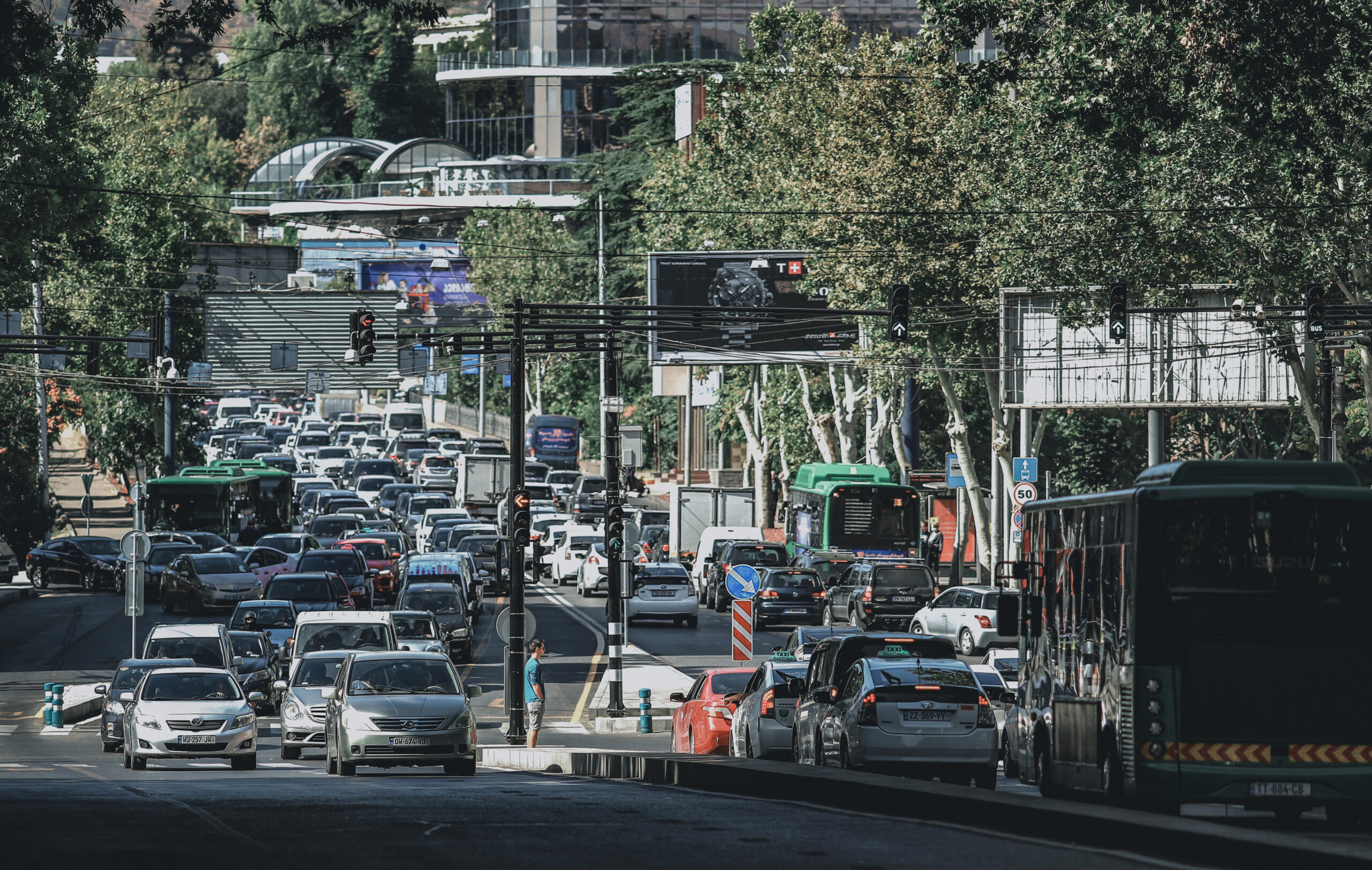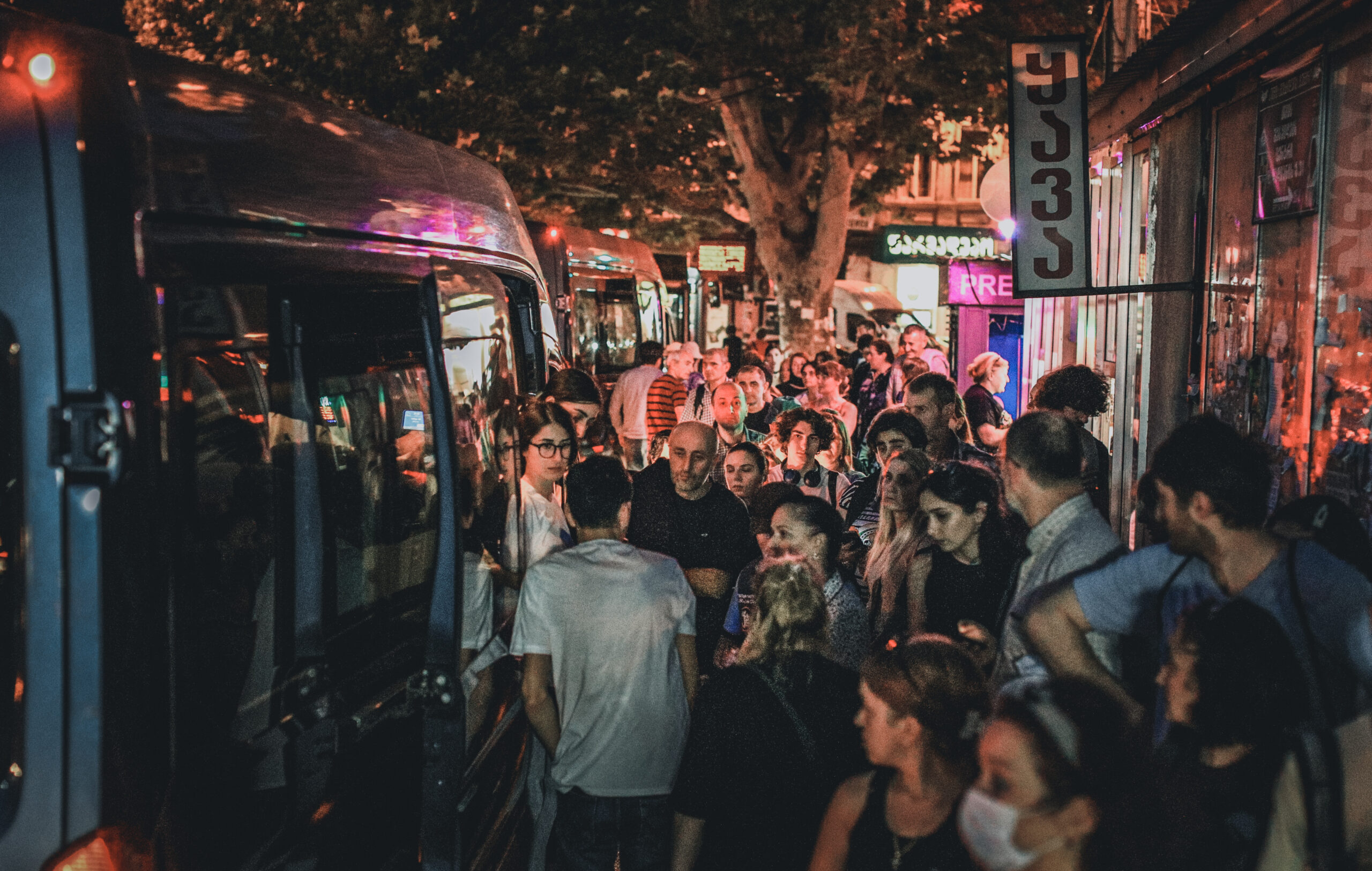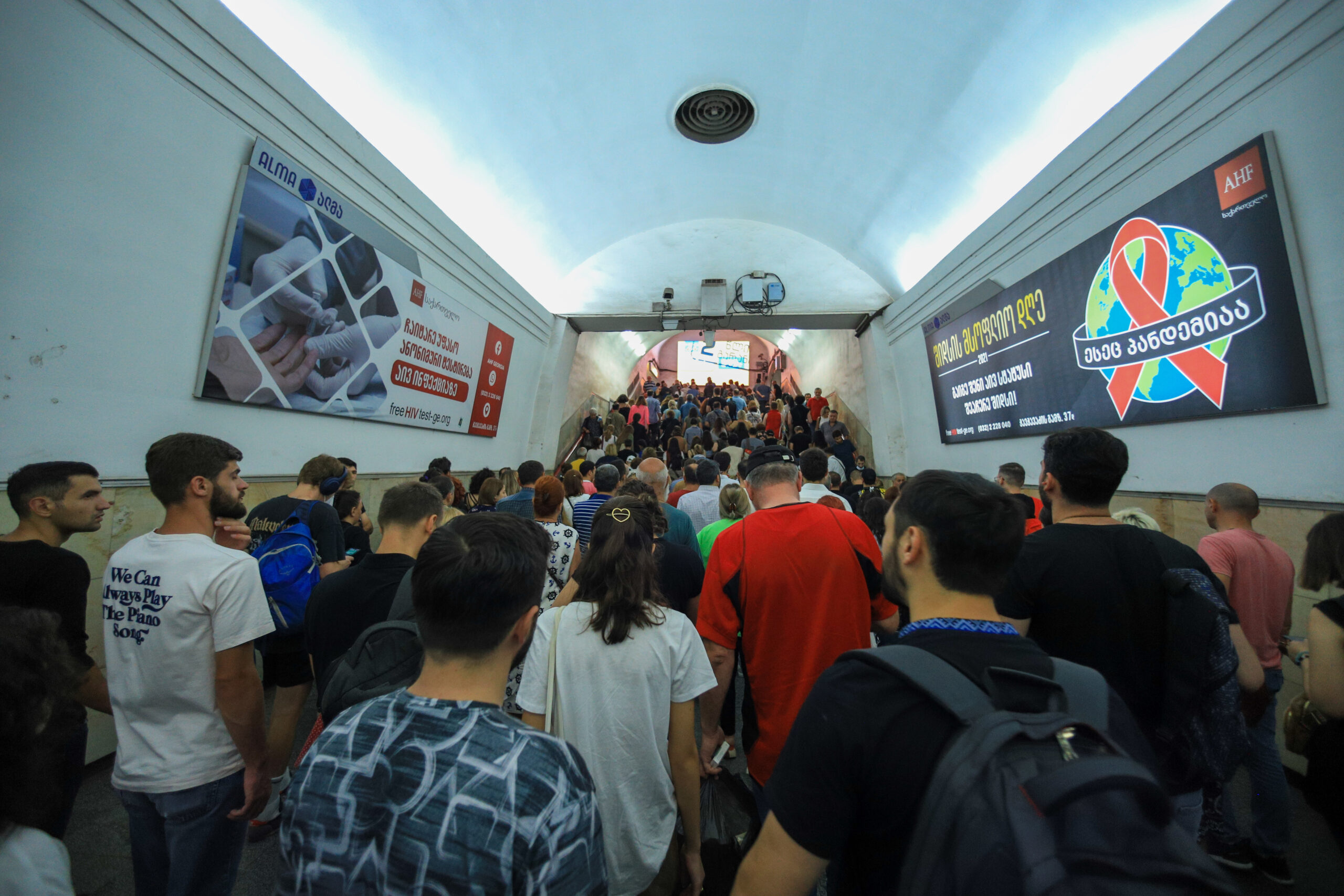Tbilisi’s public transport woes and faltering reforms
by Mariam Patsatsia, Bankwatch
Public transport: overcrowded and tardy
After a scorching summer and holiday exodus from the city, autumn brought clement weather and the usual traffic blues to Tbilisi. Children have gone back to schools, students to universities, and those on vacation have returned to their workplaces. There is visibly more purpose in the city’s movement – a race to a destination.
Yet the rush has only slowed life in Tbilisi. Drivers and passengers are stranded in seemingly endless traffic jams. Metro commuters queue to enter stations in the morning and then queue again at minibus stops to return home in the evening. (Minibuses are used by many commuters that still have to cover a long distance from the metro to their final destinations.)
Bus riders grapple with claustrophobic and discomforting closeness. Peak hours are particularly tricky. People try to get on a bus that is already at the edge of its capacity. Its doors can’t shut. The bus idles. Its sensors beep. People move away from doors into tighter proximity, dissolving the remaining semblance of appropriate distance between strangers.
In a city of around 1.2 million, on Monday, 26 September, public buses facilitated 452,000 rides, minibuses – 202,500, and metro – 417,300. The capital’s heaviest users of public transport are women, low-income populations, students, marginalised groups and the unemployed.
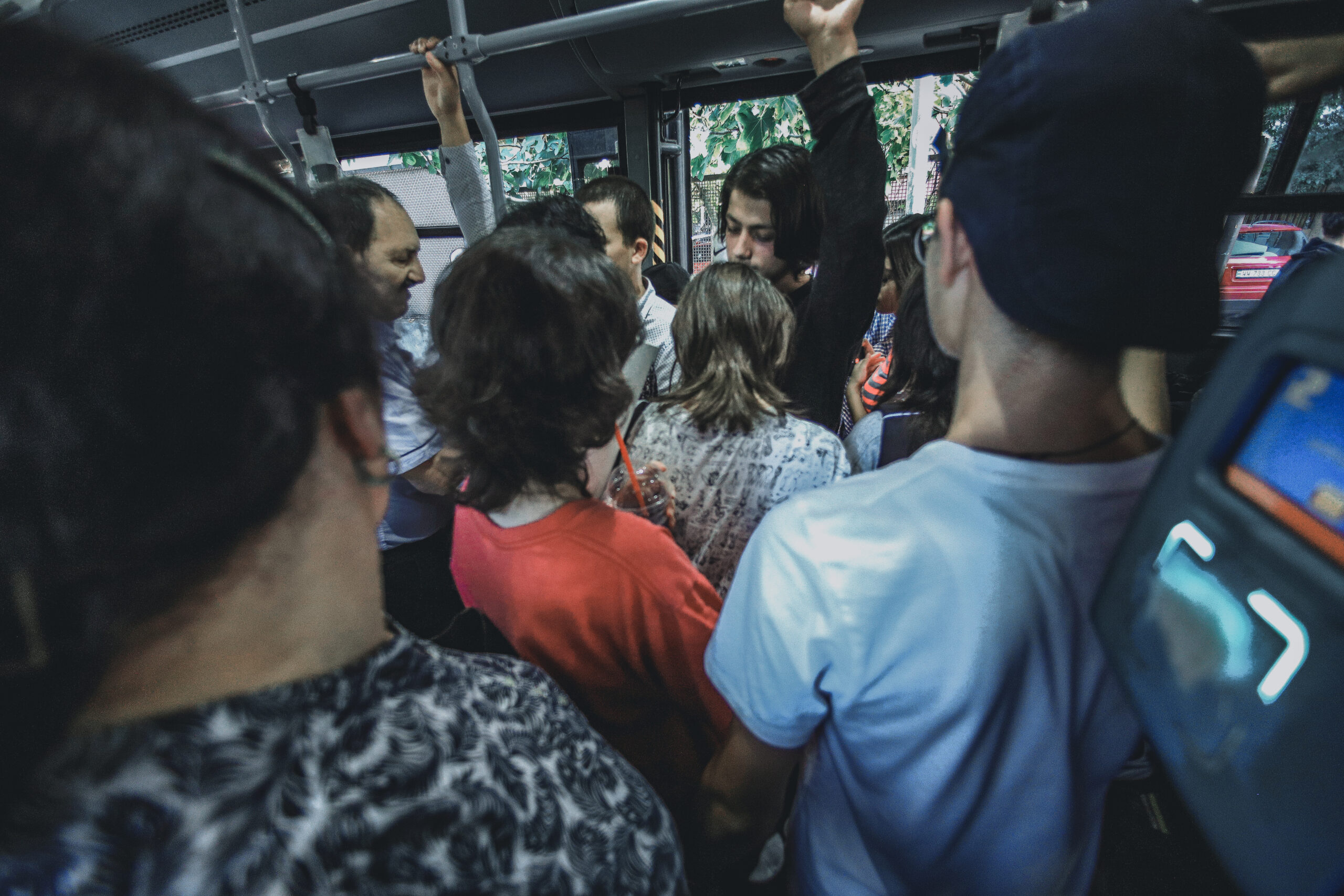
They are the ones disproportionately burdened by Tbilisi’s unreliable public transport system, including the buses and minibuses that get stuck in traffic jams and often miss their schedules. Even through, the city has started installing bus-only lanes, currently they are highly fragmented and not continuous. Consequently, although public road transport can travel faster on dedicated routes, the discontinuities force them to move to mixed traffic roadways, hampering their speed and contributing to slower arrivals. According to the mayor of Tbilisi’s own admission, a year ago in June 2021, in some cases people had to wait 30 or 40 minutes for a bus to arrive. The problem still stands today. The average interval between buses is 18 minutes and there has been no improvement in nearly four years.
The Tbilisi metro is seen an escape from congested roads. Unlike buses and minibuses, the metro can keep to its timetables and moves people a lot more frequently – the average interval between trains is three minutes. However, its coverage is limited. The two existing metro lines traverse just over 27 kilometres of the city across 23 stations.
Although the metro commuters avoid the near standstill of congested roads, they are left with other problems. Not all stations can accommodate passenger flows during peak hours. Hence, the morning queues appear at their entrances. Many of the metro’s rolling stocks are outdated, and their number is insufficient to meet the city’s demands. Overcrowding on the platforms and in train cars is commonplace. One of the more peculiar issues in the metro is noise pollution: a loud, incessant din often reaches dangerous levels.
With systemic problems in daily service, transport authorities struggle to adjust to seasonal highs and disruptions from bad weather to more specific recent developments such as the influx of high number of Russian émigrés fleeing their country in the context of the war in Ukraine.
In a public opinion survey on Tbilisi’s public transport conducted by Green Alternative in Spring 2022, 74 per cent of respondents named overcrowding as the main problem in public transport. Long waits, missed schedules and the fact that public transport stops working too early were also seen as some of the more problematic aspects of the public transit network.1
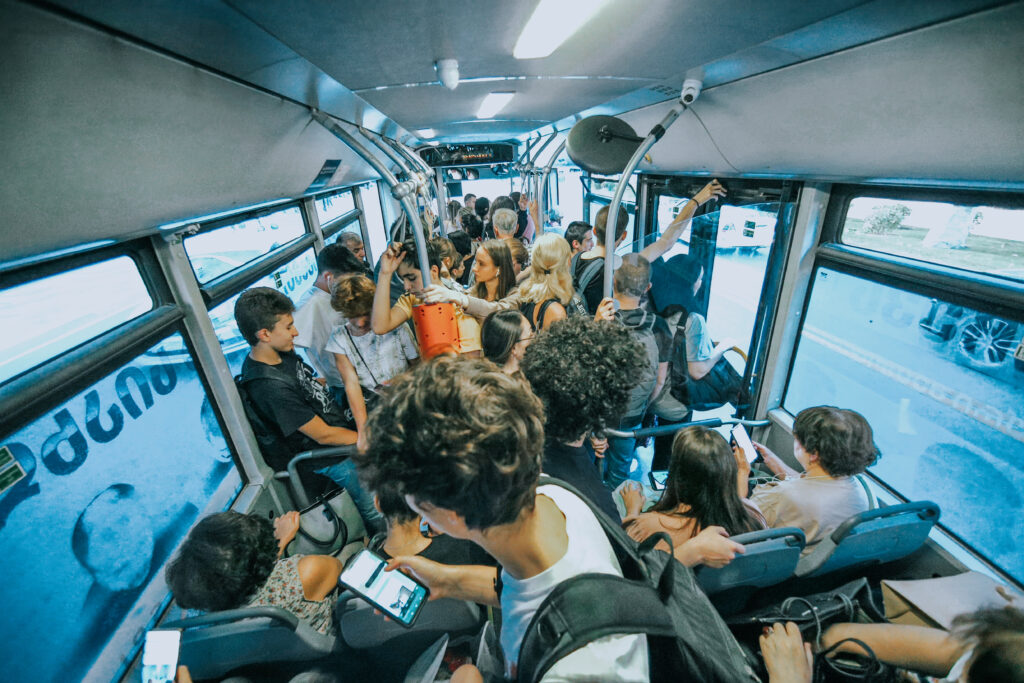
The safety and security of women and sexual and gender minority groups pose another glaring challenge for the capital’s public transit system. Sexual harassment is common in the cramped spaces of metro cars, buses and minibuses, and around stations. According to the same survey, 31.3 per cent of respondents said they had experienced sexual harassment on public transport. The majority indicated that they had not reached out to anyone after the harassment. Younger women in particular are especially vulnerable. Seventy per cent of female respondents between the ages of 18 and 35 said they had experienced unwelcome sexual advances.
Unsafe public transit also gives way to violence against LGBTI people. According to different surveys, most of the LGBTI interviewees name public transport as spaces of discrimination from 44.23 per cent in 2012 to 53.8 per cent in 2020.
Public transport accessibility for people with disabilities also remains elusive. Buses and metro are only partly adapted for some people with disabilities. Private minibuses are not adapted at all.
Private cars: plentiful and polluting

With the myriad problems plaguing the Tbilisi transport system, citizens have remained unconvinced about using public transit. Consequently, the number of private cars in Tbilisi has continued to grow. As of June 2022, there were more than 425,000 private vehicles registered in the Georgian capital, with most of the fleet – over 75 per cent – ten years or older.
A 2011 study revealed that Tbilisi residents were increasingly adopting a car-oriented culture. Most of the survey respondents preferred owning private cars and avoided using public transport. Notwithstanding some recent changes in attitudes, altering this ingrained outlook and the resulting travel behaviour requires making public transport options competitive against the perceived advantages of cars.
Restricting the number of cars on the streets is critical from the environmental standpoint as well. The vehicle exhaust of the outdated fleet is the main cause of air pollution in Tbilisi. The soaring number of cars has also expanded the demand for parking spaces and led to the overall loss of urban space to automobiles.
Public transport policy: a paradigm shift?
Since 2015, and more actively since 2018 Tbilisi’s City Hall (the city’s government) has tried to respond to mounting public pressure around mobility and environmental concerns by moving away from car centric planning and launching reforms to improve public transport. Funding from international financial institutions, namely the Asian Development Bank (ADB) and the European Bank for Reconstruction and Development (EBRD), has remained crucial to implementing some policy prescriptions and projects to remedy the mass transit network’s problems.
Between 2015 and 2019, several strategic documents were prepared with the involvement of international financial institutions, to outline the future development of mobility and transport in Tbilisi. In 2017, City Hall opened a new metro station with the ADB’s financial support. Between 2016 and 2022, it purchased 860 new buses. Out of these, 370 of them, bought through EBRD loans, run on compressed natural gas (CNG). The rest are diesel fueled and were purchased by the city. In 2018, City Hall began installing 110 kilometres of bus lanes to improve the speed and reliability of the public transit system in Tbilisi. As of July 2022, only 36.1 kilometres – about 33 per cent – of the necessary length of lanes had been laid. These attempts, however, have not addressed or solved the issues of reliability, scheduling and frequency.
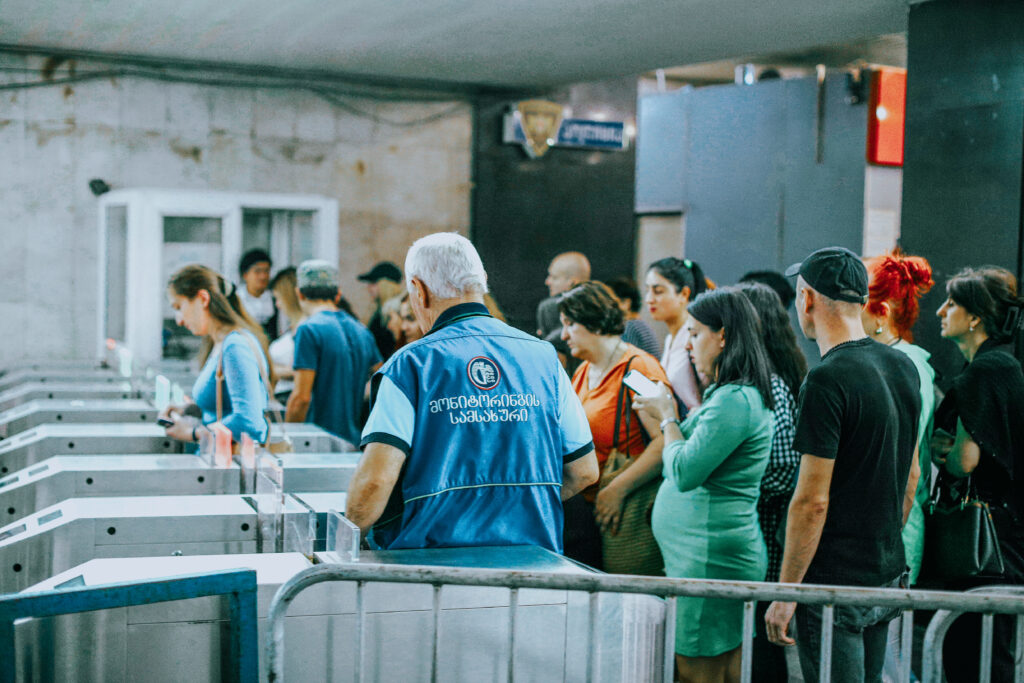

The primary reason behind the persistent problems can be traced to the fact that City Hall, on many counts, has contradicted its own commitments, failed to develop a consistent conceptual framework, lagged behind in finalizing reforms, and has yet to meaningfully engage citizens. Tbilisi City Hall has not properly planned out the future development of the transport sector and its reform based on coordinated, publicly scrutinised action plans. Despite the tens or hundreds of millions of euros spent by international financial institutions, the city still has no comprehensive sustainable mobility plan, even as it continues developing new projects.2
Indeed, what might actually undermine City Hall’s current policy direction is its own lack of public outreach and openness to democratic participation. According to a 2021 opinion poll, Tbilisi residents view the changes to public transport favourably, are more likely to support initiatives targeted at improving public transport than to support building more roads or parking spaces, and overwhelmingly back installing bus lanes even if it means slowing car traffic. Despite this, installing bus lanes, for example, often stirs ire and causes backlash in Tbilisi neighbourhoods, because citizens are not guided through the changes to their streets, key information on lane routes is often relayed after changes have been already introduced and timetables for upcoming works remains extremely vague.
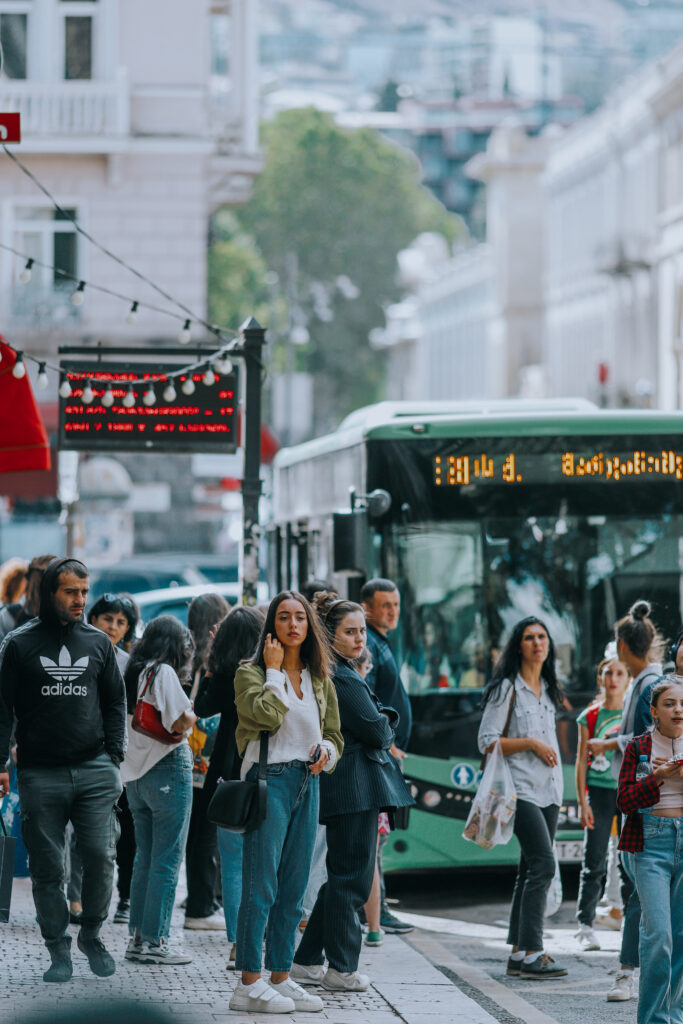
Discussions on the draft Sustainable Urban Mobility Plan (SUMP), an umbrella document that outlines concrete measures for improving sustainable mobility in Tbilisi, should commence in autumn. This is an opportunity for City Hall to encourage citizens to participate in coming up with policy solutions for the city’s mass transit problems and to take ownership of the new policy direction – a truly human-focused urban transport planning.
1 The survey was conducted by Green Alternative from 16 May to 6 June 2022 online. The survey questionnaire was published on Green Alternative’s Facebook (https://www.facebook.com/greenalt) and Twitter (https://twitter.com/GreenAltOrg) accounts. In order to increase its overall reach and survey the general population of Tbilisi residents, the survey was promoted using Facebook advertising with Tbilisi specified as the location for the targeted audience (i.e. individuals living in Tbilisi). It reached around 17,000 users and generated 1,625 engagements. Out of those reached, 80 percent were women and 20 percent men. Overall, 473 people participated. Among them, 382 were women, 87 men, and four indicated ‘other’ or that they preferred not to respond. In terms of age, 165 were 18 to 35 years old, 179 were between 36 and 60, 126 were 61 or over, and three did not specify. The survey relied on the convenience/availability sampling and aimed to investigate Tbilisi residents’ attitudes towards the city’s transport (buses, minibuses, metro and taxis). The results, however, cannot be generalised to the entire population of Tbilisi with statistical validity. The value of the survey stems from the understanding it provides about public transport riders’ attitudes toward mass transit and on their experiences as commuters.
2 The Sustainable Urban Mobility Plan (SUMP), the ADB funded strategic paper, should serve as an umbrella document and outline concrete measures for improving sustainable mobility, reducing air pollution, and boosting the accessibility and quality of public transit in the Georgian capital. The SUMP was supposed to be finalised by the end of 2020. However, it is still under development and the draft is to be shared with the public in autumn 2022.
